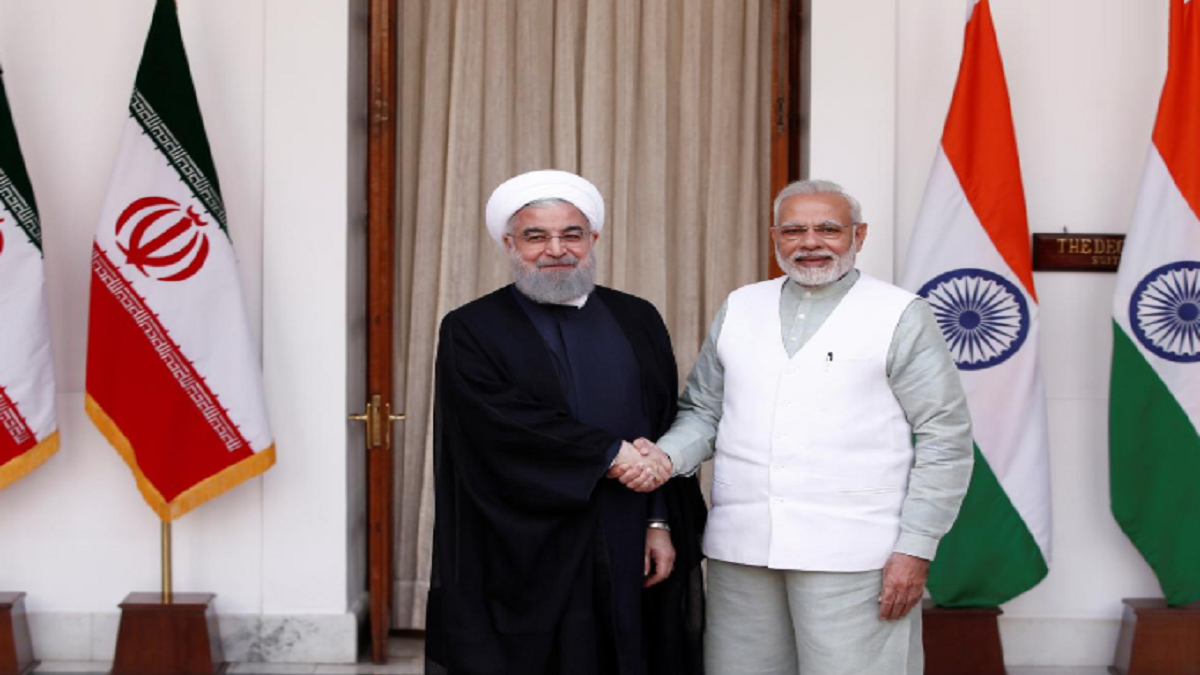With an overly expansionist and hegemonic China perilously confronting India, it requires no great geopolitical prudence to conclude that it is imperative for India to not only confront China but also strive for a harmonious environment in its neighbourhood. Being involved in diverse fronts simultaneously is never a good strategy. China, despite countless overtures and assistance in international forums since 1950 by successive Indian governments, still persists in its strategy to belittle India and confine the latter’s influence to South Asia. Accordingly, it is time for India to adopt a proactive stance to combat the revisionist Chinese in all fields, including the military, economic and diplomatic turfs. One such significant endeavour for India, unquestionably, lies in reviving its traditional friendly ties with another big country of the region — Iran.
In the last couple of years, owing to a large number of factors, India moved away from its longestablished ties with Iran. Meanwhile China, attributable primarily to its deep pockets, has succeeded in weaning Iran away from India. This cannot be denied that India getting closer — both militarily and commercially — to the United States has irked the Iranians and the wily Chinese, smelling an opportunity, are now working for an alliance with Russia, Iran and Pakistan. India’s growing military ties with Iran’s sworn rival, Israel, has also adversely impacted India-Iran relations to an extent. Iran’s strategic significance for India can never be overstated.
Till the last few years, Iran had been the second largest energy supplier to India, supplying nearly 4,25,000 barrels of crude oil per day and with India purchasing annually over $12 billion of oil from Iran. However, this annual oil trade got disconnected due to the extensive UN sanctions against Iran which then resulted in India paying off these bills through a banking system in Turkey. India, one of the world’s largest oil importers, pays for its oil imports in far larger amounts in precious foreign exchange, as Iranian oil is not being imported because of the sanctions. The ready availability and geographical proximity of Iranian oil imports to Indian ports can never be overemphasised. This aspect, vital for Indian interests, should have been strongly emphasised with its strategic partner — the US — and despite American opposition, India should have continued importing oil from Iran for a variety of reasons.
In the last few months, two disconcerting developments for India and its relations with Iran have surfaced. Recently, India’s Ministry of External Affairs (MEA) has confirmed that India is no longer involved in the Farzad-B gas field project of Iran. It was way back in December 2005 when a consortium of India’s Oil and Natural Gas Corporation (ONGC) Videsh, Indian Oil Corporation and Oil India had signed a contract with the Iranian authorities for carrying out exploration of the Farzad-B block. In May 2016, when Prime Minister Narendra Modi visited Iran, he discussed the progress of this project with Iranian President Hassan Rouhani. This block has reportedly more than 19 trillion cubic feet of gas reserves. The ONGC has invested approximately $100 million. Now after commerciality of this oil field has been established, the Iranians appear to have shown India the door, however reiterating that they will involve India appropriately at a later stage. This cooperation agreement needs to be sorted out by India and Iran.
The other major contentious issue between the two nations which has erupted recently has been the contract to develop the 628-km Chabahar-Zahedan railway line which would run along the IranAfghanistan border. This agreement was signed in 2016. After all the formalities were over, it was only this month that without taking India into confidence, Iran commenced work on this railway project. As of now, India has been kept out of this project. India has, however, conveyed to Iran that India is open to joining the development of this project later. Nevertheless, a significant project between the two nations which is progressing well is the Chabahar Port complex whose genesis was laid in the New Delhi Declaration signed in 2003. This port development was exempted from sanctions. India has taken over operations of one terminal and has handled 82 ships with 12 lakh tonnes of bulk cargo in 8,200 containers since December 2018. It must be emphasised that Chabahar is not only significant to maritime relations between the two nations but also provides an opportunity to India to reach Central Asia and Russia by the land route. It also permits India to bypass Pakistan which does not allow Indian cargo to move by the land route via Pakistan to Afghanistan.
Importantly, India is home to the second largest Shia population in the world, after Iran. India’s Shias do look up to the Iranian clergy for spiritual guidance. This is one factor which has also kept the two nations together, for Iran knows that their Shia brethren in India are treated with respect, unlike in Sunni-dominated Pakistan which traditionally has been riding roughshod over its indigenous Shia population. What is inexplicable to many across the world is that despite the Chinese indulging in massive violence and atrocities targeted against their Uighur Muslims in its restive Xinjiang province, the entire Islamic ‘Ummah’ has remained quiet on China’s worsening human rights record. Perhaps a case of China’s overflowing coffers satiating the greed of many Muslim nations.
For India, Iran’s near sudden proximity to China is indeed a cause for concern. Iran too is hardly appreciative of India’s growing proximity to the US. China will not leave any stone unturned to widen the chasm in economic and strategic ties between India and Iran and assist Pakistan, in whatever manner, to keep India occupied along its vast borders. Triggering the current serious face-off with India in eastern Ladakh is part of China’s grand design for the region.
Diplomacy is a complex interplay of many factors which go to define national interests. Nations once close to each other do, at times, drift apart. Notwithstanding India getting closer to the US, it will be in our supreme interest that we maintain our strategic autonomy in foreign affairs and keep the otherwise divided and restive Islamic world also on our side. It will be in the interest of both Iran and India for peace, stability and economic growth amongst them and the region to foster closer ties with each other. That is the cardinal imperative dictated by our geography.
The author is India’s first chief of the Defence Intelligence Agency and now president of the Delhi Forum for Strategic Studies.










